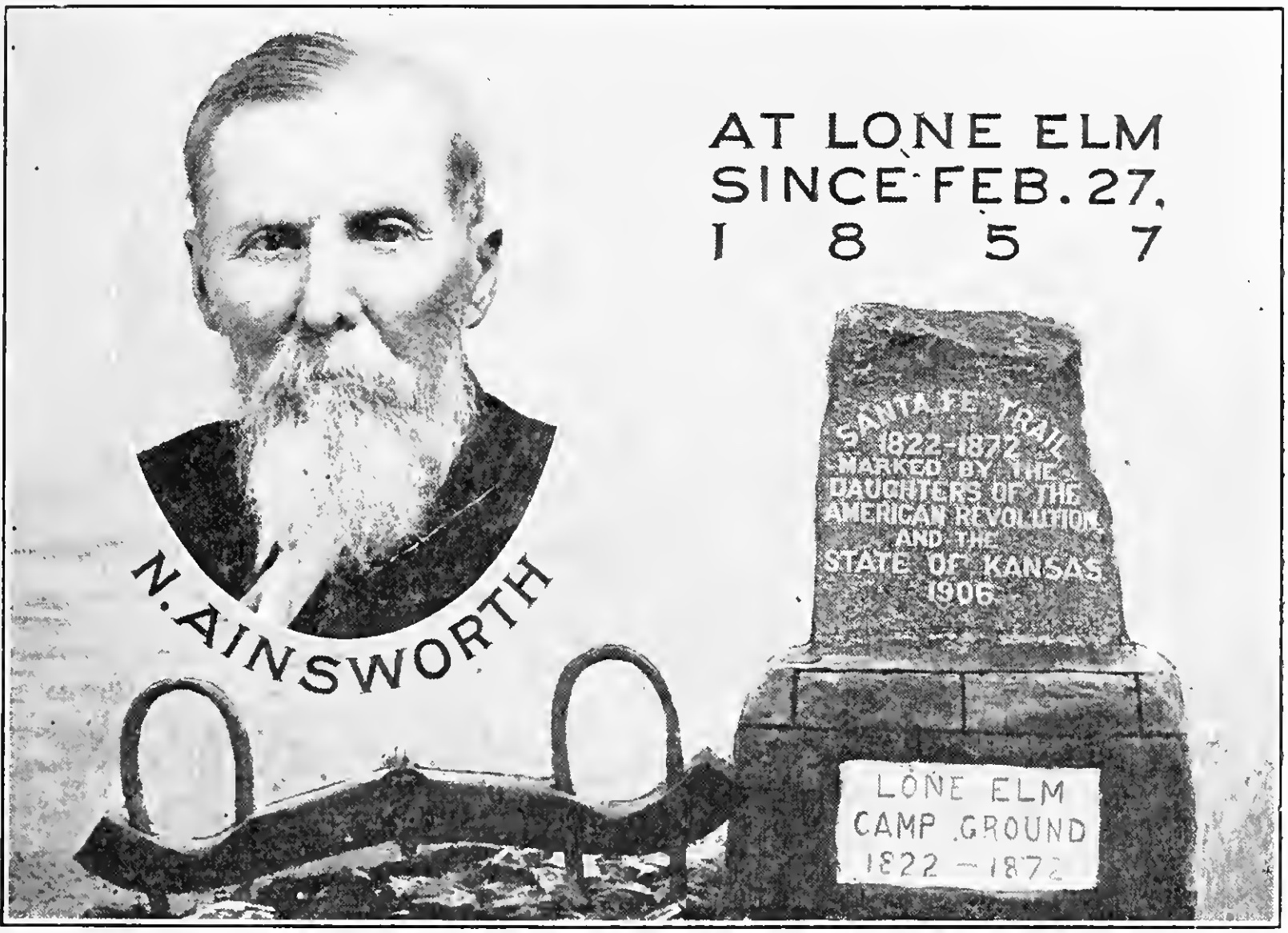Source: From the HISTORY OF Johnson County Kansas
BY ED BLAIR, Published in 1915
 Santa Fe Trail Marker at Lone Elm Camp Ground
Santa Fe Trail Marker at Lone Elm Camp Ground
Of the five Santa Fe Trail markers for Johnson county, provided by the Daughters of the American Revolution and the legislature of Kansas, the one unveiled at Lone Elm, November 9, 1906, was the second to be placed in position in this county, and it might be said here that Newton Ainsworth, one of the original old settlers, and through whose farm the trail ran, together with George Black, were mainly instrumental in getting the marker located at Lone Elm. An appropriate program that had been arranged, and was carried out. Mr. Ainsworth delivered the following address :
"We are here today to erect a monument in memory of that which more than anything else, wiped out the great American desert. In the beginning, the Santa Fe Trail ran from Old Franklin, Mo., across the plains to New Mexico. The merchandise was shipped from St. Louis by steamboat to Franklin and from there was freighted west in ox and mule trains. Usually but one trip was made a year. After a time the outfitting point was moved from Franklin west to Independence, Mo., and later to Westport, the steamboat landing being called Kansas, the nucleus of the present Kansas City. This trail of those days was like the railroads of today: it made and unmade towns. The freighting business was immense. To give an idea of its magnitude, I will note the firm of Majors & Russell, who owned and worked on the trail, 1,200 ox teams, with six yoke of oxen to the team. This would make 14,400 head of cattle and 1,200 wagons, 1,200 drivers and 50 wagon bosses ; and that was only a drop in the bucket compared with the grand total on the trail. I saw wagon trains camped on this Lone Elm camping ground, until they covered more than this entire quarter section. In their desire not to be detained, and to be on the road first in the morning, they commenced at 12 o'clock at night to hitch up and pull for the trail, and the last teams did not pass where we are now standing until 4 o'clock in the afternoon. At one time, for three days in succession, the last teams going out of camp had not passed here before hundreds were going into camp. The rush to the Pike's Peak gold fields, in 1858, is what made the heavy emigration and the heavy loads of freight that year. All the roads north, east and south centered to the Lone Elm camp ground. The great Santa Fe Trail was the main artery to the Southwest, and the other roads from north of the river joined it here, going east. "In 1860 I have seen the dust here over six inches deep on account of the great drouth and heavy travel. The freight trains to New Mexico consisted of twenty-six wagons, with six yoke of oxen or ten span of mules to each wagon, twenty-six drivers and two wagon bosses. Lone Elm was the first camping ground after leaving Little Santa Fe, on the Missouri line. This town is noted for the fact that more than 1600 votes were cast there at the territorial election of October 5-6, 1857, when not more than a half dozen families lived in the neighborhood. "The Santa Fe Trail follows a dividing line or ridge from here to New Mexico, from which the waters run both ways, north and south. The bulk of the freight going west, consisted of provisions, merchandise, meats and breadstuffs, while the return loads consisted of gold and silver in nail kegs, buffalo robes and furs ; and, strange to say the gold and silver in the kegs did not leak any on the trip. During the height of this heavy freighting, the plains from here to Mexico, abounded in immense herds of buffalo, while antelope, deer and elk, were plentiful, though now almost extinct. The old system of transportation, slow and laborious, has given way to the new system of swiftness, ease and luxury, but we are sorry to say, with less honesty."
